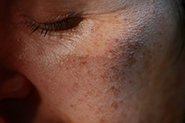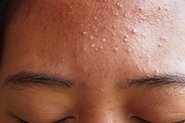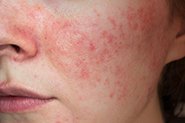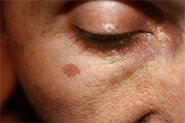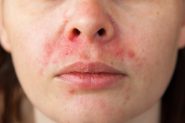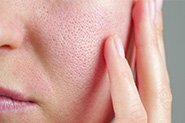A HEALTHY SKIN BARRIER = GLOWING SKIN
What is the Skin Barrier?
The skin barrier (aka the ‘stratum corneum’ – the outermost layer of your skin that you see in the mirror) is a complex defence mechanism – it is your body’s primary defence against the outside world. It might be 50 times thinner than a piece of paper, but it is mighty!
The skin barrier consists of layers of water resistant skin cells (‘corneocytes’) arranged into a 3D structure of horizontal layers and interlocking vertical columns, embedded into a highly organised arrangement of oily lipids.
Some people compare this structure to a brick wall: the skin cells are bricks, and the lipids are the mortar that ‘glues’ everything together.
As you will see, this description doesn’t come close to the sophisticated system that is your skin barrier!
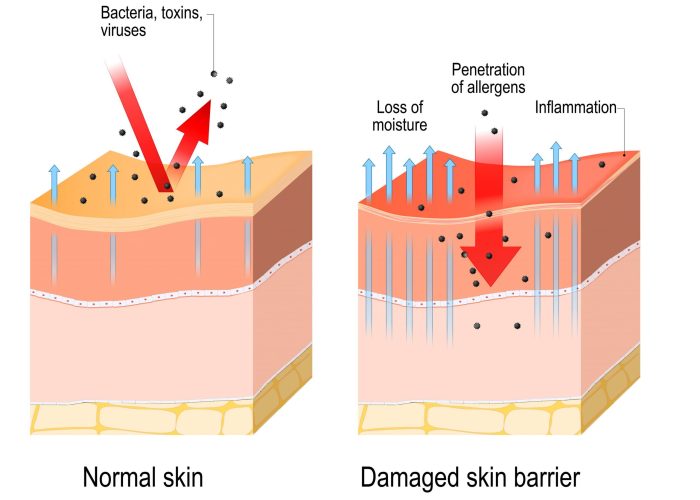
What does the Skin Barrier do?
One problem with the ‘bricks and mortar’ description is that people often think of the skin barrier as a static ‘wall’ that operates like cling wrap to keep things in and out, rather than the dynamic, ever-changing system that it is.
The skin barrier performs a constant elaborate dance between many cell types, proteins, chemicals, nerves, microbes and even your skin’s pH level. These all work together to adapt to the environment, and perform the important job of barrier function.
In the next section we go into detail about the specific functions of the skin barrier.
SKIN BARRIER FUNCTIONS
| Regulating excessive trans-epidermal water loss (TEWL) |
Trapping water for skin hydration | ||
| Defending against harmful microbes, physical damage and constant bombardment with UV light and free radicals, and environmental pollution |
Sensing the environment like a biosensor, linking it to the body’s innate immune and nervous systems, and to other layers in the skin, such as the lower epidermis and dermis |
||
| Selectively absorbing or repelling chemicals applied to it |
Continuously shedding old skin cells and renewing itself (a process called ‘desquamation’) |
||
| Producing its own ‘Natural Moisturising Factor’ (NMF) to keep itself soft and supple |
Producing enzymes and proteins that regulate its own structure and function (e.g. the enzymes that unlink skin cells and allow them to shed) |
We have been trained by the beauty industry to think that these outer skin layers are ‘dead’ (aka unnecessary), contribute to dull looking skin, and should be exfoliated away to reveal the glowing skin beneath. It should already be clear from the myriad functions that this tiny skin layer performs, that this isn’t true. Next time you feel like scrubbing away that layer of useless skin cells, remember that your skin barrier is critical to healthy, glowing skin, and should be nurtured, not attacked.
What are the Skin Barrier Lipids?
Cholesterol (10%), fatty acids (25%), and ceramides (50%) are the major lipids in our skin barrier, with some minor lipids making up the remaining 15%. The fatty acids component also includes lipids from the skin’s sebaceous glands (squalene, wax esters and triglycerides), especially at the skin surface where sebum exits the pores.
Ceramides are found throughout the body, but in the stratum corneum, they are the major lipid component. Ceramides aren’t just one type of lipid – at last count there are 15 different types of ceramides in your skin barrier, each with a slightly different structure. Some of these ceramides are bound to the surface of skin cells, others are located between the cells, mixed with the fatty acids and cholesterol.
These oily substances are essential to skin barrier structure and function, and, like corneocytes, are continuously replenished from the epidermis. They are arranged with extreme precision between skin cells, and work with those cells to provide a physical ‘barrier’. Experiments show that removing lipids from the skin, increases the skin’s permeability, diminishing it’s barrier function. The ceramides are of particular importance; the number and types of ceramides are altered in many diseases involving an impaired skin barrier.
Several of the skin barrier lipids are also antimicrobial, helping to protect against infection.
HOW YOUR SKIN BARRIER HELPS WITH WATER LOSS
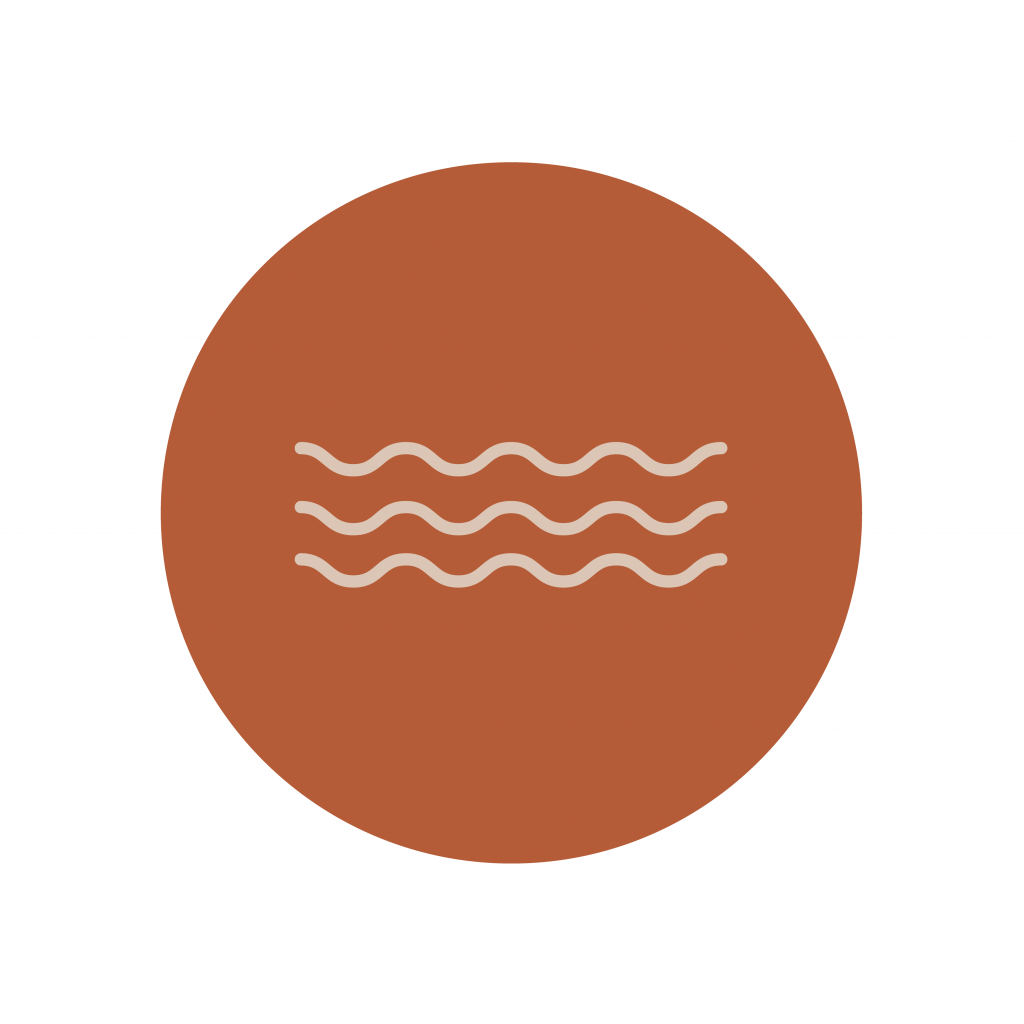
The most important job of your skin barrier is to prevent excessive water loss and keep your skin hydrated.
This is achieved by the skin cells and barrier lipids working together.
Each skin cell is surrounded by a water-resistant shell of protein and lipids, with each cell tightly connected to its neighbours with special proteins that act like rivets.
Between and attached to the cells are the skin barrier lipids, which, like all oily substances, repel water.
So the major route for water to leave the skin from the dermis (the most hydrated layer of skin), is a tortuous pathway between water-repellent skin cells, and through equally water-repellent lipids.
This same mechanism keeps topically applied substances from penetrating into the lower levels of the skin (and from there into the bloodstream) – and why even topical drugs must be formulated into special drug delivery bases to help them get past the skin barrier.
Don’t believe the old wives tale that 60% of everything you apply to your skin is absorbed!
SIGNS OF A DAMAGED SKIN BARRIER
| Dull skin that lacks a healthy glow | Sometimes flakes or peels | ||
| Bumpy rashes (can be mistaken for breakouts/purging) |
Inflamed/irritated, red skin | ||
| Enlarged pores, more prominent lines & wrinkles |
Itchy skin | ||
| Burns when skincare is applied (sometimes even just water!) |
Feels uncomfortable (tight, dry) |
Apart from feeling uncomfortable, and not looking your glow-y best, a disrupted skin barrier can no longer perform its excellent protective duty. So anything you apply to your skin can result in burning and stinging, contact dermatitis, and an exaggerated inflammatory response, exacerbating the problem even further, and sometimes causing infections.
In extreme cases, just washing your face with water can cause burning!
What causes a damaged skin barrier?
Mechanical stress (‘scrubby’ exfoliants, cleansing devices, trauma), dehydration (reduced humidity, long hot showers/baths, cold winds, indoor heating, reduced sebum production with age, drying skincare), detergents (soaps, body washes), irritants (skincare actives, especially chemical exfoliants and prescription retinoids), allergens, and even chronic sun damage can all push skin past its tolerance limits, disrupting the delicate physical architecture of the stratum corneum, and subsequently, the skin microbiome.
This leads to increased water loss (TEWL), and production of chemicals that activate the body’s immune system, causing inflammation. An impaired skin barrier is also the hallmark of several chronic diseases, such as rosacea, perioral dermatitis and eczema.
In the early stages of skin barrier damage (the tight, dull, dry stage, that can involve some breakouts and bumps), many people turn to exfoliants to get their glow back, or add in an acne treatment to treat the ‘bumps’ (that are actually part of the inflammatory process). This is like using steel wool to repair gravel rash and will make things much worse.
WHAT’S THE BEST TREATMENT FOR A DAMAGED SKIN BARRIER?
The epidermis can repair a damaged skin barrier within 4 days, so the easiest fix is to simply remove the trigger that caused damage, and let your skin do all the heavy lifting to repair itself.
Unfortunately many people don’t recognise the early signs of barrier impairment, and increase their use of skincare products and exfoliants, or add new active skincare products, further aggravating the skin, and delaying the healing process. And if you’re using a complex, multistep skincare routine, it can be hard to identify the culprit. With continued damage, secondary issues like infection, rosacea and perioral dermatitis can also become apparent.
That’s where Qr8 MediSkin comes in! Our experienced Dermal Therapy Nurse can customise the best treatment plan for you. Without the need to visit a clinic, or wait in line at the pharmacy or cosmetic counter.
Our Skin Barrier Repair Service is a personalised treatment package, that includes everything you need to get your skin health back on track.
Our Skin Barrier Repair Service is designed to provide everything you need to get your skin back on track. This 1-month intensive care program is delivered by our expert Dermal Therapy Nurse, and costs $220.

We get to know you – our nurse invests time during your initial 30 minute 1:1 video consult to get to the bottom of what caused your skin issue and educate you about your skin.

Then your nurse becomes your personal skin expert, with weekly check-ins to assess your progress, and unlimited support and advice throughout the month.

Our Skin Barrier Repair service also a La-Roche Posay skincare kit (cleanser, moisturiser, intensive care balm) suitable for fragile, intolerant skin, delivered to your door, as part of your treatment plan.
References


